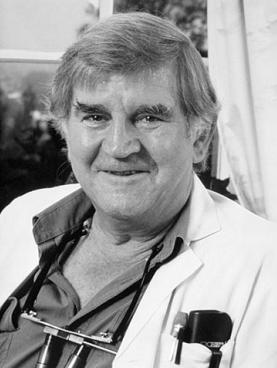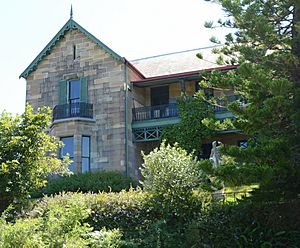Fred Hollows facts for kids
Quick facts for kids
Fred Hollows
|
|
|---|---|
 |
|
| Born |
Frederick Cossom Hollows
9 April 1929 Dunedin, New Zealand
|
| Died | 10 February 1993 (aged 63) Randwick, New South Wales, Australia
|
| Nationality | New Zealand/Australia |
| Education |
|
| Alma mater | |
| Occupation |
|
| Political party | Communist Party of New Zealand (1950s–1960s) |
| Spouse(s) | |
| Children | 7 |
Frederick Cossom Hollows AC (9 April 1929 – 10 February 1993) was a New Zealander Australian eye doctor. He became famous for his work helping people see again in Australia and many other countries. He did this through important projects like The Fred Hollows Foundation.
Contents
Early Life and Education
Fred Hollows was born in Dunedin, New Zealand, on April 9, 1929. He was one of four brothers. The family lived in Dunedin for his first seven years.
He went to Palmerston North Boys' High School when he was 13. Later, he earned a degree from Victoria University of Wellington. He thought about becoming a priest, but then decided to study medicine. He enrolled at Otago Medical School.
While in Dunedin, Fred was active in the New Zealand Alpine Club. He climbed several mountains in the Mount Aspiring/Tititea area. In 1951, he even helped famous climber Edmund Hillary carry a heavy pack. Hillary later said Fred was the only person who ever offered to carry his load.
Fred was a member of the Communist Party of New Zealand during the 1950s and 1960s.
He was married twice. His first wife, Mary Skiller, passed away in 1975. In 1980, he married Gabi O'Sullivan. They met when Gabi was training to be an eye specialist. They worked together on a big eye health program. Later, they started The Fred Hollows Foundation together.
Fred was originally a New Zealand citizen. He became an Australian citizen in 1989. He was named Australian of the Year in 1990.
Medical Career and Helping Others
In 1961, Fred went to England to study ophthalmology, which is the study of eye diseases. After more training in Wales, he moved to Australia in 1965. There, he became a professor of eye care at the University of New South Wales in Sydney. He led the eye care departments at the university and two hospitals until 1992.
In the early 1970s, Fred worked with Gurindji people and other Aboriginal communities in Australia. He was very worried about the many eye problems Aboriginal people faced. A common problem was trachoma, an eye disease that was not seen in other developed countries. These visits made him want to improve eye health and living conditions for Indigenous Australians.
In July 1971, Fred helped start the Aboriginal Medical Service in Sydney. He also helped set up medical services for Aboriginal people across Australia.
He helped organize the National Trachoma and Eye Health Program from 1976 to 1978. Fred spent three years visiting over 460 Aboriginal communities. He examined 62,000 Aboriginal people. This led to 27,000 people being treated for trachoma and 1,000 eye operations.
Helping People Around the World
Fred also worked to help people in other countries. He visited Nepal in 1985, Eritrea in 1987, and Vietnam in 1991. He helped set up training programs to teach local people how to perform eye surgery.
These experiences showed him that eye care was too expensive in many developing countries. He came up with a plan to make special eye lenses (called intraocular lenses) at a very low cost. He organized laboratories in Eritrea and Nepal to make these lenses for about A$10 each. These labs began making lenses after his death in 1993.
The Fred Hollows Foundation was started in Sydney on September 3, 1992. Its goal is to continue Fred's work. The Foundation helps provide eye care for people who cannot afford it. It also works to improve the health of Indigenous Australians. The Foundation is also active in the United Kingdom and New Zealand.
Later Life and Legacy

Fred Hollows passed away in Sydney, Australia, in 1993. He was 63 years old. He had been diagnosed with kidney cancer six years earlier.
He was given a state funeral service in Sydney. As he wished, he was buried in Bourke, where he had worked with Aboriginal communities. He is remembered for his strong belief in equality and helping those in need.
A park near his old home in Sydney, called Fred Hollows Reserve, was named after him in 1993.
Awards and Recognition
- 1981: Received the Advance Australia Award for his work in Aboriginal eye care.
- 1985: Became a consultant for the World Health Organization (WHO).
- 1989: Became an Australian citizen.
- 1990: Received the Human Rights Medal.
- 1990: Named Australian of the Year.
- 1991: Named Humanist of the Year.
- 1991: Appointed Companion of the Order of Australia (AC), a high honor.
- 1991: Received honorary doctorates from the University of New South Wales and Macquarie University.
- 1991: Named the first honorary citizen of Eritrea.
- 1993: Received the Rotary Award for World Understanding.
- 1993: Awarded the Royal Australian College of Ophthalmologists Medal for his service, the night before he passed away.
- 2004: Entered into the 'Hall of Fame' at the NSW Aboriginal Health Awards.
- 2005: An operating theatre at Canberra Eye Hospital was named after him.
- 2005: Named one of "New Zealand's Top 100 History Makers".
- 2010: Featured on a $1 Coin from the Royal Australian Mint.
- 2016: A street in his birthplace, Dunedin, was named Fred Hollows Way.
- 2017: A Sydney Ferries boat was named Fred Hollows.
See also
 In Spanish: Fred Hollows para niños
In Spanish: Fred Hollows para niños
- Himalayan Cataract Project
- Fred Hollows Foundation
- Gabi Hollows
- Sanduk Ruit

